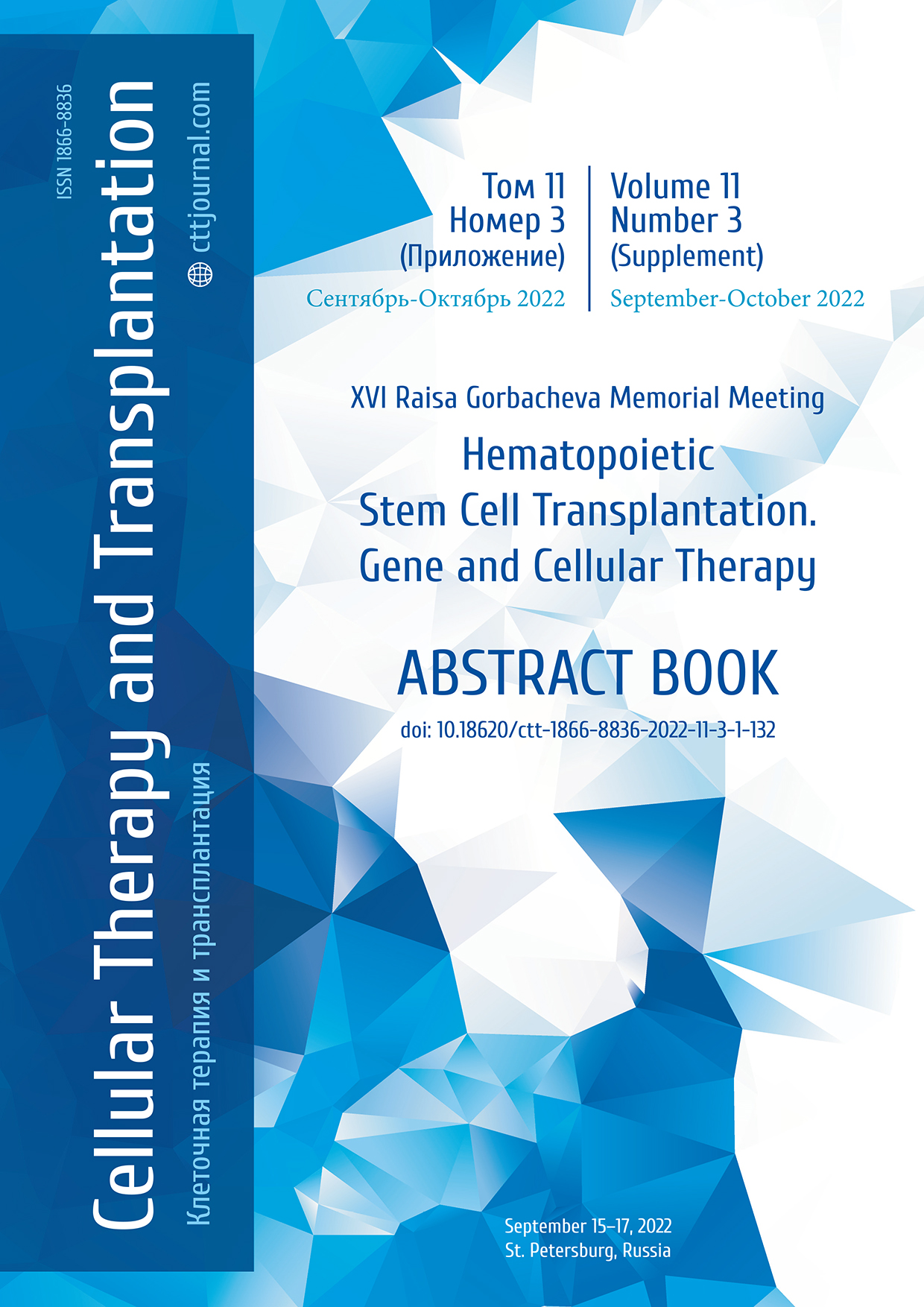CM-04. Characteristics and treatment of blast crisis in chronic myeloid leukemia
Julia S. Yakovleva, Ksenia S. Yurovskaya, Yulia Yu. Vlasova, Ivan S. Moiseev, Elena V. Morozova
RM Gorbacheva Research Institute, Pavlov University, St. Petersburg, Russia
Contact: Dr. Julia S. Yakovleva, phone: +7 (911) 907-18-95, e-mail: YakovlevaYuliyaS@yandex.ru
Summary
Blast crisis in chronic myeloid leukemia (CML BC) is a rare clinical and biologically heterogeneous condition often characterized by aggressive clinical course. Despite successful use of tyrosine kinase inhibitors (TKIs), some patients with CML still develop blast crisis. There is no standard approach to the BC treatment, and outcomes are, generally, unsatisfactory with long-term overall survival rarely exceeding 10% (Saxena K. et al.). The objective of this study was to evaluate treatment outcomes, in particular, overall survival (OS), in patients with CML BC.
Materials and methods
A total of 87 patients (65 males and 22 females) with verified CML treated at the RM Gorbacheva Research Institute for 1st or subsequent BC were included into this retrospective cohort. Therapeutic efficacy was evaluated according to the European LeukemiaNet (ELN) criteria.
Results
The median age at the time of diagnosis was 42 (18-62) years. In 66% of cases (n=57), the diagnosis was established in chronic phase (CP); in 19% of cases (n=17), in acceleration phase (AP). De novo occurrence of BC was revealed in 15% of cases (n=13) identified as myeloid in 9%, and lymphoid, in 6% of the patients. Cytogenetic data at diagnosis were available in 85 cases (98%). Additional chromosomal aberrations (ACAs) were present in 31 (37%) cases. The most frequent findings were, e.g., trisomy 8 (29%), 3q26 rearrangement (23%), monosomy 7 / 7q deletion (17%), trisomy 19 (13%), additional Ph-chromosome (13%), and complex karyotype (55%).
The median age at the first BC was 44.5 (21-76) years, with a median time since primary diagnosis of 39.5 (0-248.5) months. Most BC cases (79.3%) were myeloid; extramedullary lesions were seen in 8% of cases. Most patients received complex therapy regimens combining chemotherapy and TKIs (56%); only chemotherapy was applied in 30% cases, and in 14% cases TKI-only regimens were used, mostly, with dasatinib (in 75% of cases). Allogeneic hematopoietic stem cell transplantation was not performed due to progression, severity of condition, presence of significant comorbidities, lack of donors, patient refusal. The response was evaluated in 78% of cases, with 47% of patients being resistant to 1st-line therapy and 31% of patients reaching CP (complete hematologic response in 100%, cytogenetic response in 30%, and molecular response in 19% of cases). In 22 % of cases, a 2nd BC developed, with median OS of 11.5 months since 1st BC. The median time from BC1 to BC2 or death evaluated in 72 patients was 7.8 (0.6-107.2) months. At the time of the last evaluation, 16% of patients were alive and 84% died of the disease progression (82%), other documented reasons (1.4%), or due to unknown cause (17.4%). The 2-year and 5-year OS were 28.7% and 18.4%, accordingly.
Conclusion
The outcomes in patients with CML BC remain poor, with a median time until BC2 development or death being less than 1 year. Prompt diagnosis and treatment initiation as well as timely transition to allogeneic hematopoietic stem cell transplantation are crucial to achieve a response.
Keywords
Chronic myeloid leukemia, blast crisis, tyrosine kinase inhibitors.


